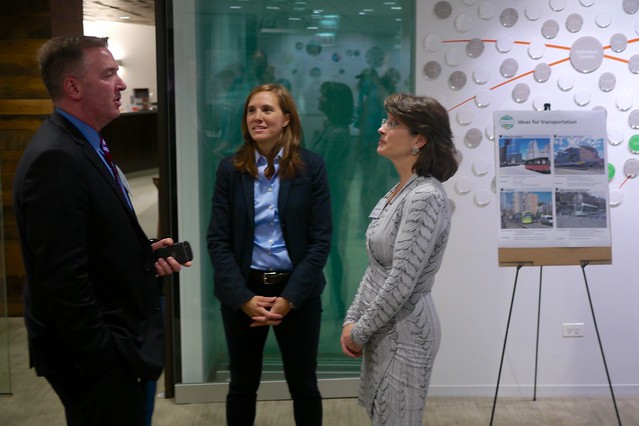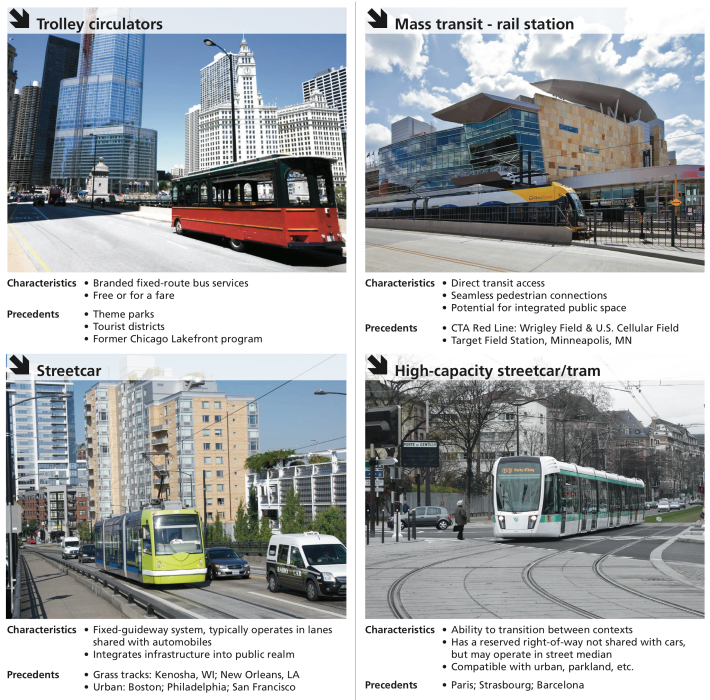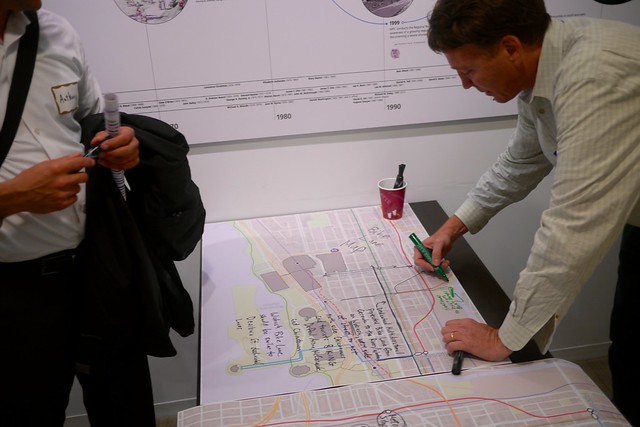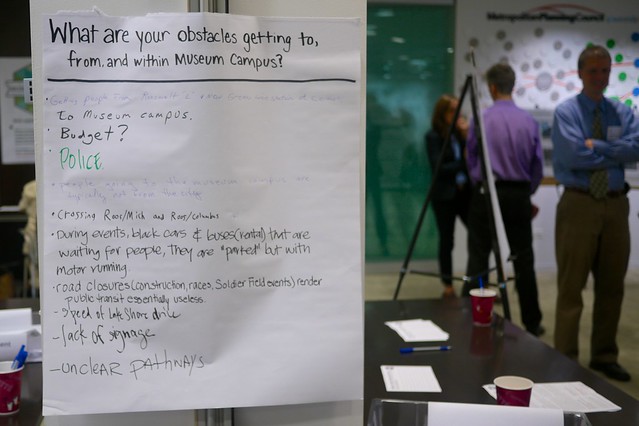Making It Easier to Get to the Museum Campus Without a Car
3:00 PM CDT on October 15, 2014
It's already a bit of a hassle to get to and around Chicago's Museum Campus, which includes the Field Museum, the Shedd Aquarium, the Adler Planetarium, and Soldier Field. In light of plans to build the Lucas Museum, as well as Rahm Emanuel's goal to increase tourism from 49 million visitors last year to 55 million in 2020, the problem could get worse.
This summer, the mayor created the Museum Campus Transportation Task Force to review how people currently get to the campus and travel between the attractions, as well as to propose transportation improvements. The Metropolitan Planning Council is heading up the task force, which also includes city agencies, the leadership of the four main campus amenities, and nearby neighborhood groups.
MPC president MarySue Barrett said Emanuel gave the task force 90 days to finish the study. The report will serve as the transportation component of the Chicago Park District's long-term Framework Plan. Plans for the Lucas Museum were announced after the task force convened. "Access has been troublesome for a while before that," Barrett noted.
"This is the first time there's been planning for the museum campus since the relocation of Lake Shore Drive," Barrett said. The northbound lanes of the highway, which formerly ran between the Field and the Shedd, were moved west of the football stadium in the late 1990s, which allowed for the creation of the campus. The budget for that project didn't "have enough give at the time," Barrett said, for the kind of transportation planning and improvements the task force is now considering.

Barrett said that the first step in the task force's research process is to collect public input and information from the dozen involved organizations. "There are five million visitors annually to the Shedd, Adler, and Field Museums," she said, adding that they're trying to get input from three types of visitors: Chicagoans, suburbanites, and visitors from outside the region. "We're looking at the museums' attendance surveys to see how people arrive," she said.
To brainstorm ideas for improving access to the museum campus, MPC is hosting three public meetings, the first of which was held yesterday evening at their downtown offices. See below for details on the two remaining events. The public is also encouraged to submit ideas and concerns about campus transportation issues online.
Roughly 70 people attended last night's session. Issues ranged from security measures during special events that block park access days after the event, to police hassling pedicabbers when they offer Bears fans rides to transit stations or bars. Attendees were invited to sketch out their ideas on maps. Some South Loop residents highlighted streets where they'd like to see protected bike lanes.
Barret said a couple of Bears season ticket holders showed up for the meeting because they heard about it via an email blast from the team. The fans said they enjoy tailgating, and they're worried about where they'll be able to grill brats if the Lucas Museum is built on top of an existing Soldier Field parking lot, as planned.
Allan Mellis, a Lincoln Park neighborhood organizer, offered his suggested criteria on which to base the plan. The first, he wrote, is to build upon the existing transit infrastructure offered by CTA, Metra, and Pace. He also said there should be no public funds for expansion or operating costs.
MPC displayed myriad ideas on poster boards to inspire attendees, including an aerial tram (used in Latin American cities and London to cross mountains and a river, respectively), a wearable "Magicband" -- used by Disney -- that would allow visitors to get inside museums and pay for transit between the campus and their hotel, as well as a streetcar running in a dedicated lane, a transportation mode that used to run all over Chicago.

John Krause, head of Chicago Streetcar Renaissance, is meeting with stakeholders, including museum leaders, to design a route for streetcars running in exclusive tramways that would link Metra's West Loop stations with the Magnificent Mile, Navy Pier, and the Museum Campus. He's met with the task force, the CTA, and the Chicago Department of Transportation, too, but he's just at the outset of working with those agencies and Museum Campus institutions on the design. Krause also wants the city to link the Museum Campus portion with a route that solves the problem being tackled by the River North/Streeterville transit study. "It's one infrastructure investment that promotes tourism, serves suburban commuters, and boosts downtown business," he said.
T.C. O'Rourke came to the meeting to learn more and share his story about how he and other pedicab operators are fighting to be able to reach Bears fans, a solid customer base. He said that barriers have been set up to prevent their vehicles from passing through -- separate from the new regulations city council passed last spring -- and police officers are telling them to get off the Museum Campus sidewalks -- even though, like all parks, they're multi-use paths.
There are two upcoming meetings:
Tuesday, October 21, at 6:30 p.m.
Spertus Institute, 610 S Michigan Ave
Monday, October 27, 6 to 8 p.m.
Vice District Brewing, 1454 S Michigan Ave (with beer sampling!)
Stay in touch
Sign up for our free newsletter
More from Streetsblog Chicago
Today’s Headlines for Thursday, April 25
It’s electric! New Divvy stations will be able to charge docked e-bikes, scooters when they’re connected to the power grid
The new stations are supposed to be easier to use and more environmentally friendly than old-school stations.




